Thanks to Gene Thieves We Have ‘Alien DNA’ in Our Mitochondria
Summary: Mitochondrial DNA and mitochondrial dysfunction have recently entered the spotlight because they play a significant role in chronic diseases. [Author: Brady Hartman. This article first appeared on LongevityFacts and was updated on Mar 2, 2018.]
Most people don’t realize that all human beings have two sets of DNA in their bodies, the DNA inside our chromosomes, and a foreign DNA inside our mitochondria, that our ancestors stole from bacteria over a billion years ago.
Look into any of your cells, and you’ll see mysterious foreign DNA lurking inside your mitochondria, the tiny organelles that litter your cells. Recently, mitochondria have come under a growing scientific spotlight; scientists increasingly believe they play a central role in many, if not most, human illnesses. Mitochondria are the powerhouses of the cell, and when they falter, our cells lose power, just as a flashlight dims when its batteries weaken. Recently, researchers have linked mitochondria to an array of metabolic and age-related maladies, including autism, type 2 diabetes, cancer, Alzheimer’s, Parkinson’s, and cardiovascular disease.
While our mitochondria did not come from another planet, they might as well have. Peer through a microscope, and you’ll swear that tiny aliens have invaded your cells. You are partially correct. Mitochondria appear out of place compared to the other structures within the cell. Something ‘alien’ has invaded our cells, eons ago, but it came from primordial bacteria, a distinctly terrestrial source.
Scientists feel that mitochondria hold the key to new treatments for a variety of human conditions, including the aging process itself.
Bizarre Mitochondria
Mitochondria are the tiny structures within the cells that convert food into a form of energy that our cells can use. Each cell can contain anywhere from hundreds to thousands of mitochondria, residing in the fluid that surrounds the nucleus of the cell. Mitochondria were once thought to be merely the powerhouses of the cell because their primary job is to take in nutrients, break them down, and create a molecule called adenosine triphosphate (ATP), used as a source of energy by the cell.
Researchers have discovered that mitochondria perform many other tasks besides producing ATP, and no longer relegate the organelle to being the “power plant of the cell.” Researchers have recently gained a new understanding of the alien world of mitochondria. Once considered an academic backwater, mitochondrial biology is deemed to play a fundamental role in human health and aging.
You may already be well-versed in biology and know how our cells work. Mitochondria, however, play a different set of rules. When compared to other microscopic structures in our bodies, mitochondria differ in nearly every way imaginable, including their appearance, reproduction, and behavior.
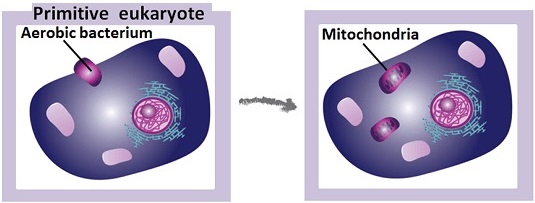
Welcome To The Alien World Of Mitochondria
Like many great stories, this one begins with a theft committed by our great-great ancestors.
The leading theory among scientists is that our mitochondria came from bacteria that our cellular ancestors engulfed about 1.5 billion years ago. As a result, foreign DNA, also called mitochondrial DNA, resides inside every one of our cells, inside tiny organelles called mitochondria, known as the powerhouses of our cells. Our mitochondria contain their own genetic material called mitochondrial DNA, or mtDNA for short.
The fact that we have foreign DNA inside our bodies is beyond dispute. The partnership with these foreign organisms has served us well as scientists believe this seminal event was a key milestone in the evolution of all higher life forms such as plants and animals.
The event happened billions of years ago, so you would think it would be hard to find witnesses. The only witnesses are the mitochondria themselves. They aren’t hard to find as there are over ten million billion mitochondrial witnesses in every human body. These witnesses have been telling their story, and researchers have been listening. Most of the evidence is circumstantial, but here are the facts of the case:
- Mitochondrial DNA is circular, differing significantly from the DNA in our chromosomes.
- The DNA in our mitochondria is similar to the DNA found in bacteria.
- Mitochondria have two membranes.
- Mitochondrial DNA is very similar to the DNA of bacteria called Rickettsia prowazekii. However, over the last billion-plus years, the DNA in our mitochondria has become much smaller, because it has donated genetic information to the cellular nucleus.
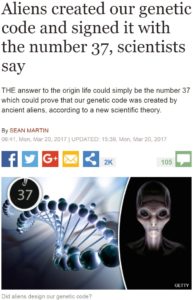
Truth Is Stranger Than Fiction
Some make the dubious claim that our DNA originated from outside the planet and that extraterrestrials somehow encoded the number 37 in it. The absurd story has gained traction among the populace.
However, the significance of the number 37 doesn’t come from extraterrestrial beings, but, rather from terrestrial sources.
You see, our the DNA in our mitochondria contain exactly 37 genes.
Truth is stranger than fiction. In the last few years, respected researchers have made discoveries about mitochondria that make the absurd claim of ‘extraterrestrial DNA’ look downright boring.
Bottom Line: The aliens in our bodies came from bacteria, not extraterrestrials.
Mitochondrial Research Is Hot Once Again
Each of our cells has hundreds to thousands of mitochondria, except for greedy cancer cells which have much more.
For decades, the study of mitochondria was once considered an academic backwater. The last few years have witnessed a significant upsurge of interest in the tiny dynamo. Researchers are investigating the role of mitochondria in aging, evolution and various human conditions, including cancer, Alzheimer’s disease, and dementia. Researchers have gained a tremendous amount of new knowledge about the tiny organelle.
Researchers funded by government agencies such as the U.S.’s National Institute of Health have made remarkable recent discoveries about the once-boring mitochondria. The lowly mitochondrion behaves in ways that are downright strange.
For example, mitochondria reproduce independently from our cells. Additionally, mitochondria form networks and ‘swap bodily fluids.’ Our mitochondria march to the beat of a different drummer.
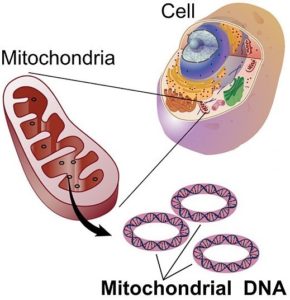
Mitochondrial DNA
Although they take their orders from the nucleus, each mitochondrion carries an entirely different genetic code.
Most people are aware that the DNA determines our physical characteristics, such as eye color, hair color, height and more. This DNA is found in the nucleus of our cells is called nuclear DNA and contains the blueprints for assembling proteins, the building blocks that make our cells and bodies work.
Our mitochondria take most of their marching orders from the cell nucleus. The DNA in the cell nucleus uses transcription factors to control which mitochondrial genes are expressed. The mitochondrion talks back to the cell nucleus, informing it of the state of its health and also the state of the cell’s energy metabolism.
Although estimates vary, humans have anywhere from 20,000 to 30,000 genes in the chromosome. In stark contrast, out mitochondria only contains 37 genes. While the human genome is full of unused genetic code, the mitochondrial genetic material is bare bones. All of its genes are essential for normal mitochondrial function. Mitochondrial DNA arranges itself in the shape of a circle, unlike the strands found in our chromosomes.
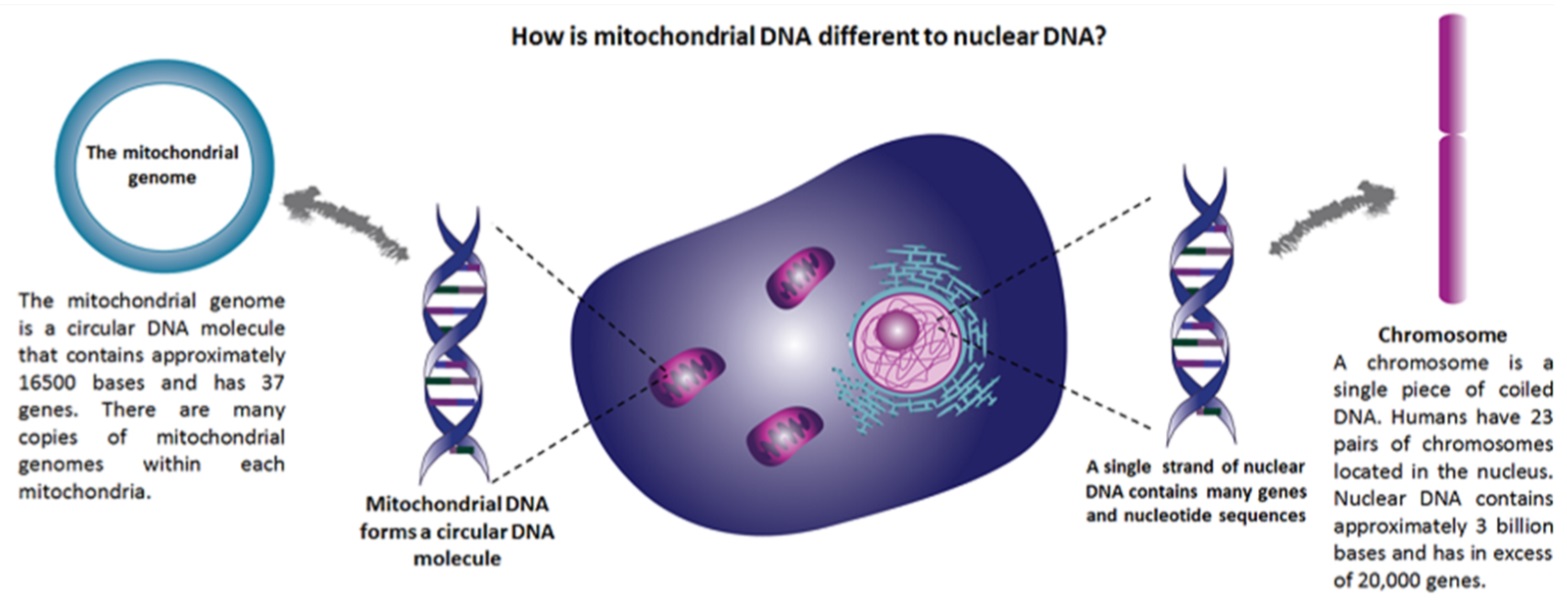
Compared to nuclear DNA, mitochondrial DNA is much smaller. Nuclear DNA contains over 3 billion base pairs while mtDNA contains only 16,500.
While the theft of the ancient bacteria occurred long ago, the stolen bacteria and our cells have evolved to accommodate one another to share functions within the larger cell. Over the billion-plus years, the cell has dismantled much of the former bacteria’s genome and shaped it into what has now become the mitochondria. However, the mitochondria have maintained a subset of its ancient DNA, especially the genes vital to energy production. After the eons, the mitochondria still retains the complex genes used to make the necessary enzymes, hugely complex molecules for electron transfer and respiration cycles.
Thirteen mitochondrial genes are involved in making enzymes for oxidative phosphorylation, the mitochondria’s main course of business. The mitochondria’s remaining genes provide instructions for making molecules called transfer RNAs and ribosomal RNAs, which are chemical cousins of DNA. These two types of RNA help assemble amino acids into functioning proteins.
Compared to the DNA in our chromosomes, decoding the mtDNA is child’s play. Given its simplicity, you would have thought that researchers would have figured the role that mitochondria play in human health and aging. After all, a modern bicycle has more parts. Not only would have scientists figured everything out by now, but figured out ways to manipulate the mitochondria to improve our health.
If you thought that way, you would have been dead wrong.
Mitochondrial DNA has always lingered in shadows, when compared to her glamorous sister, DNA. Watson and Crick gave us the first real insights in DNA in 1953 when they discovered that it takes on the form of a three-dimensional double helix.
By way of comparison, mtDNA stepped out of the limelight in the late 1970s, when Dr. Douglas C. Wallace, showed that human mitochondrial DNA is inherited exclusively from the mother.
The lowly mitochondrion lingers in the shadows no more.
Mitochondria in Cancer
Mitochondria play a tremendous role in helping cancer to grow and spread. In fact, our mitochondria go out of their way to help the cancer cell.
In a healthy cell, mitochondria produce energy through a process called oxidative phosphorylation. This process uses simple sugars and oxygen to create a molecule called adenosine triphosphate (ATP), used by our cell as its main energy source. Our cellular ancestors stole mitochondria and incorporated them pretty much intact because they possess a set of enzyme complexes that carry out oxidative phosphorylation.
Sometimes, crime does pay.
Normal healthy cells use oxidative phosphorylation to make ATP. Cancer cells, on the other hand, use a different process to make energy, and this makes them stick out like a sore thumb in the cellular landscape. Some view this is a chink in cancer’s armor, and some scientists propose targeting the mitochondria of cancer cells as a way to treat and shrink tumors.
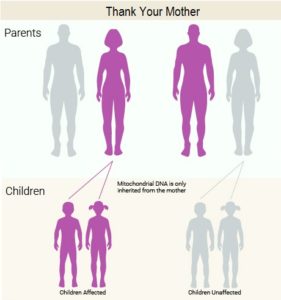
Mitochondria in Evolution
Mitochondria do not just have different DNA; they reproduce from generation to generation in uncharacteristic ways that make them a valuable tool to study evolution and human health. Mitochondria play a central role in our physiology and have helped us adapt and evolve throughout the history of life on earth by enabling flexible physiological responses to new environments.
Because mitochondria multiply clonally, like bacteria, they evolve differently and pass from generation to generation in a different manner.
While you may get your intellect from your mother and your color from the father (or vice-versa), you got your mitochondrial DNA from your mother. And your mother got her mtDNA from her mother, and so on. In the late 1970s, Wallace and colleagues showed that human mitochondrial DNA is inherited exclusively from the mother.
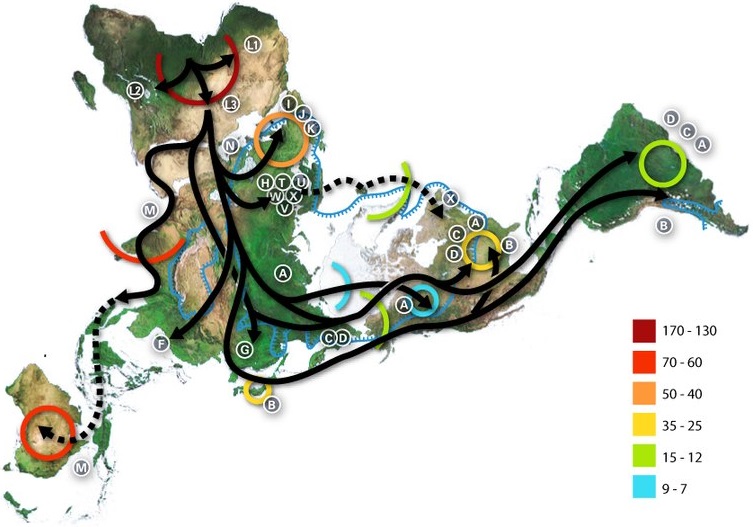
Wallace and his team then used this knowledge to reconstruct the ancient migrations of people by comparing variations in mtDNA among populations throughout the world. Based on these studies, researchers have concluded that humans arose in Africa about 200,000 years ago. However, only two lineages of mtDNA successfully left Africa about 65,000 years ago and colonized the rest of the world.
Mitochondrial DNA varies depending on our country of origin. The mtDNA of a person from a cold climate has evolved to be different from that of an individual originating from the tropics.
The Role of Mitochondria In Human Disease
Scientists have discovered that these tiny organelles also play a central role in a wide variety of metabolic and degenerative diseases, including Alzheimer’s and Parkinson’s disease, type 2 diabetes, obesity, cardiovascular disease, and the slowdown in metabolism that occurs with age.
For example, mitochondria are also involved in the production of cholesterol and the oxygen-carrying molecule called heme, a component of hemoglobin in the blood.
Scientists have discovered ways to improve human health and most likely extend lifespan, including the practices of calorie restriction and the Fasting Mimicking Diet. Researchers feel these two anti-aging interventions owe their health benefits to pathways involving the mitochondria.
The Role of Mitochondria in Aging
Mitochondria play a fundamental role in the cellular activities involved in aging, mostly through signaling and cell death. For example, mitochondria help regulate the self-destruction of cells, in a form of cell death called apoptosis.
In addition to communicating with the host cell nucleus, mitochondria talk to each other, both inside the cell and without. To send messages to other cells and mitochondria throughout the body, mitochondria generate hormones that are transmitted through the bloodstream.
Mitochondria form networks within the cell and gang up so to speak. Respected researchers even suggest that the 100 million billion of them dispersed throughout our bodies communicate in a vast network, and may conspire to bring about ill health and aging.
Mitochondrial Decline Causes Failing Health
As we grow older, our mitochondria decline in quantity and quality. Mitochondrial dysfunction is a key hallmark of aging and is partially responsible for a general overall decline in our health. Researchers implicate mitochondrial dysfunction in a variety of human conditions, including the decline in hearing, intellect, lower muscle strength and endurance. Because mitochondrial decline is a key cause of failing health, scientists are researching ways to stop or reverse the damage.
Unlike our regular cells, mitochondria have an unlimited ability to make fresh copies of themselves. Mitochondria are merely lacking the appropriate commands that tell them to do this.
Scientists are researching supplements and other treatments that promote the production of new mitochondria and enhance their efficiency, to help people live longer healthier lives.
Related Articles
- Researchers discover keys to mitochondrial DNA mutations that play a significant role in diseases.
- Scientists look to cure cancer by targeting mitochondria.
Show Us Some Love
- One click helps us spread the word – Share this post on social media and help us spread the word. It only takes a click on any of the social media links on this page.
- Follow us on social media – Google+ | Facebook | Reddit
- Sign up for our email list – We use your email to notify you of new articles. We will not send you spam, and we will not share your email address. You can cancel at any time.
- Tell us what you think – Scroll down to enter your comments below.
References
Wellcome Trust Centre for Mitochondrial Research. What Mitochondria Do. Wellcome Trust Centre for Mitochondrial Research Newcastle UK. Online publication. Retrieved 09/19/2017.
Dario C Altieri. Mitochondria on the move: emerging paradigms of organelle trafficking in tumour plasticity and metastasis. British Journal of Cancer (2017) 117, 301–305. doi:10.1038/bjc.2017.201 www.bjcancer.com. Published online 4 July 2017
Douglas C. Wallace, Mitochondrial function and cancer, Nature Reviews Cancer. May 2012
Disclaimer
Diagnosis, Treatment, and Advice: This article is intended for educational and informational purposes only and is not a substitute for professional medical advice. The information provided in this report should not be used during any medical emergency or for the diagnosis or treatment of any medical condition. Consult a licensed physician for the diagnosis and treatment of any and all medical conditions. Call 911, or the equivalent emergency hotline number, for all medical emergencies. As well, consult a licensed physician before changing your diet, supplement or exercise programs. Endorsements, Photos & External Links: This article is not intended to endorse companies or other organizations, or their products. Links to external websites, mention or depiction of company names or brands, are intended for illustration only and do not constitute endorsements.
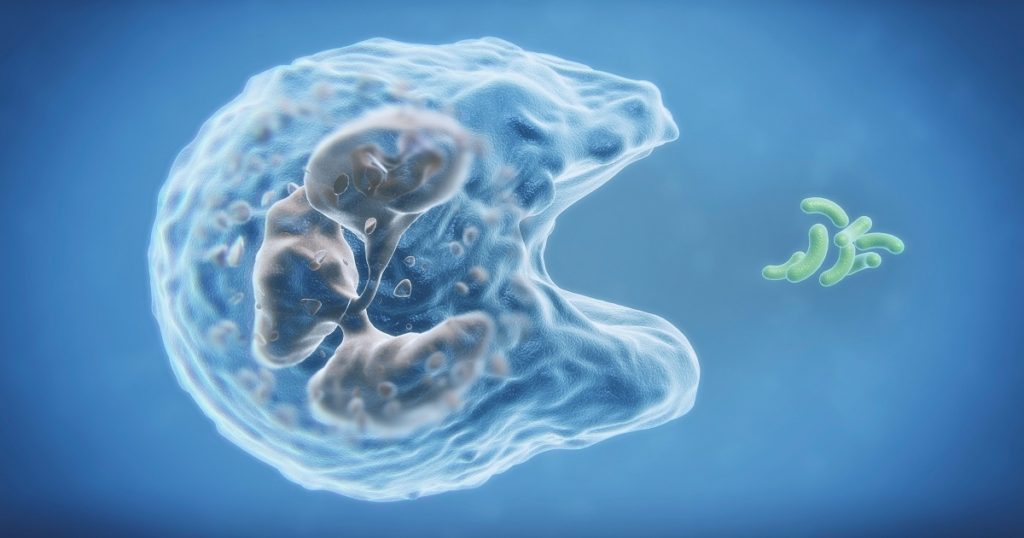
10 Replies to “Thanks to Gene Thieves We Have ‘Alien DNA’ in Our Mitochondria”
Comments are closed.